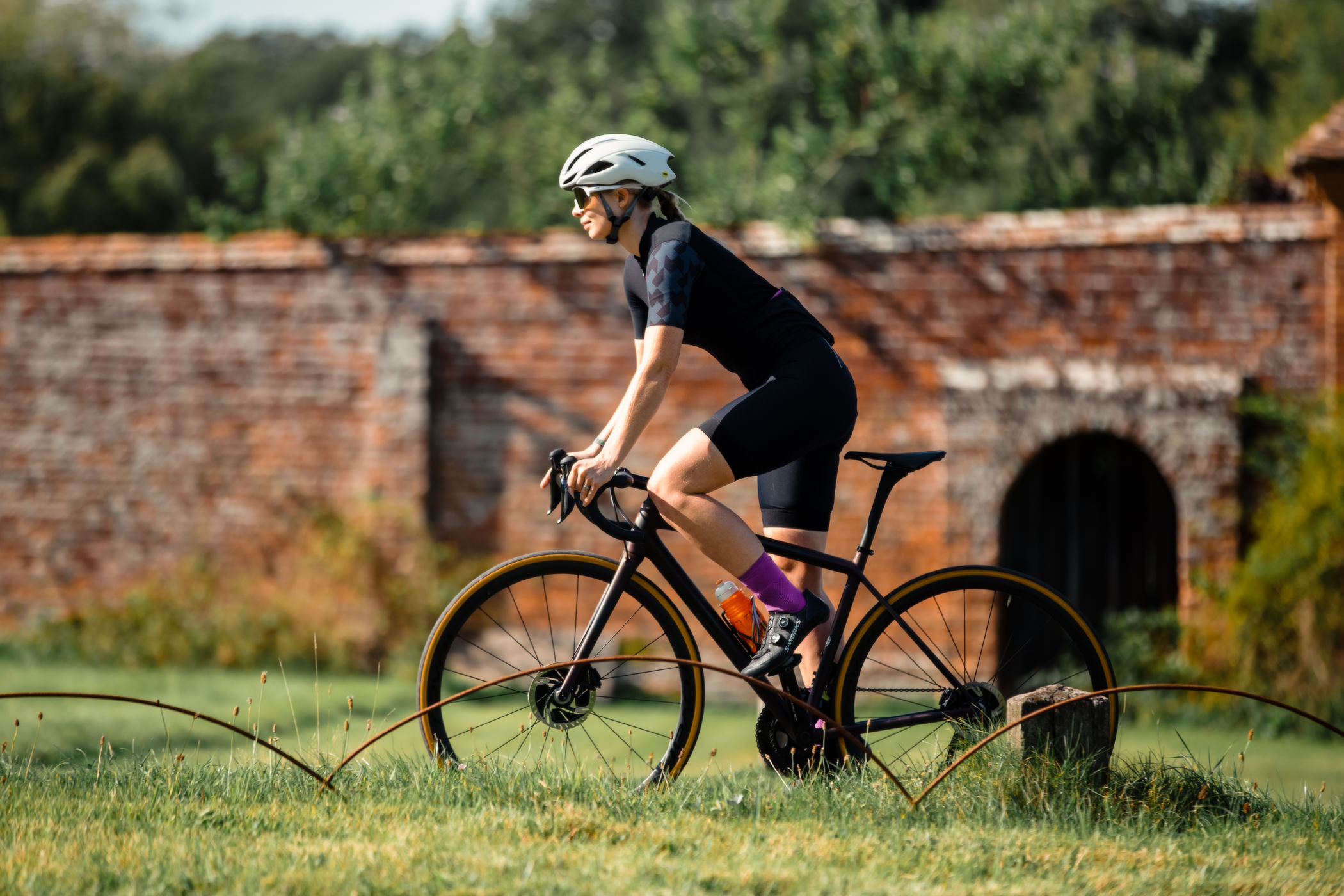Best cycling jerseys 2025: our top-rated jerseys to ride in every season
The best cycling jerseys should keep you comfortable, whether it's hot, cold or even during an indoor session
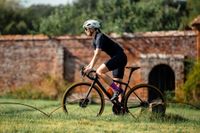

The best cycling jerseys are essential to any cyclist's wardrobe. They not only keep us cool or warm and store our snacks, but can also express our style and fashion sense. The humble jersey is even becoming the subsequent significant potential performance gain, with more and more featuring aero detailing and increasingly tight cuts. They can also serve as a valuable safety feature, either in bright colours or with the inclusion of reflective detailing.
Of course, the best cycling jersey depends on the context and the weather you're riding in. In summer, the best short-sleeved jerseys can wick sweat away, minimise sunburn and provide cooling airflow. For early starts and long descents, you can always pair your jersey with the best arm warmers for extra warmth.
Autumn and spring riding depend on where you choose to ride; for those braving the elements, the best long-sleeved cycling jerseys will almost certainly be needed. More than likely paired with the best winter cycling jackets. For those sensible ones who choose to get their winter miles done indoors on the best smart indoor trainers, you will undoubtedly want to consider the best indoor cycling clothing.
In this guide, I round up all the best cycling jerseys in their various forms, providing a little information on how best to utilise each style and its pros and cons. Most of the jerseys in this guide are available for both men and women. However, I have also rounded up the best women's cycling jerseys, too.
Our pick of the best cycling jerseys
Best long-sleeved jerseys
Best for: Cooler starts and late finishes in Spring and Autumn. Add it to your layering system over a base layer and under a winter jacket as you head into winter.
The best long-sleeved jersey can see you from Autumn through winter and into spring if you are smart with your layering. Long-sleeved jerseys come in a wider range of styles and thicknesses depending on the chill you expect to ride in. They will almost always feature insulating properties like a fleece lining or employ a hybrid fabric combining materials like merino wool. Some will even feature panels of fabric designed to protect from wind chill and rain.
Why not check out our full guide to the best long-sleeved cycling jerseys?
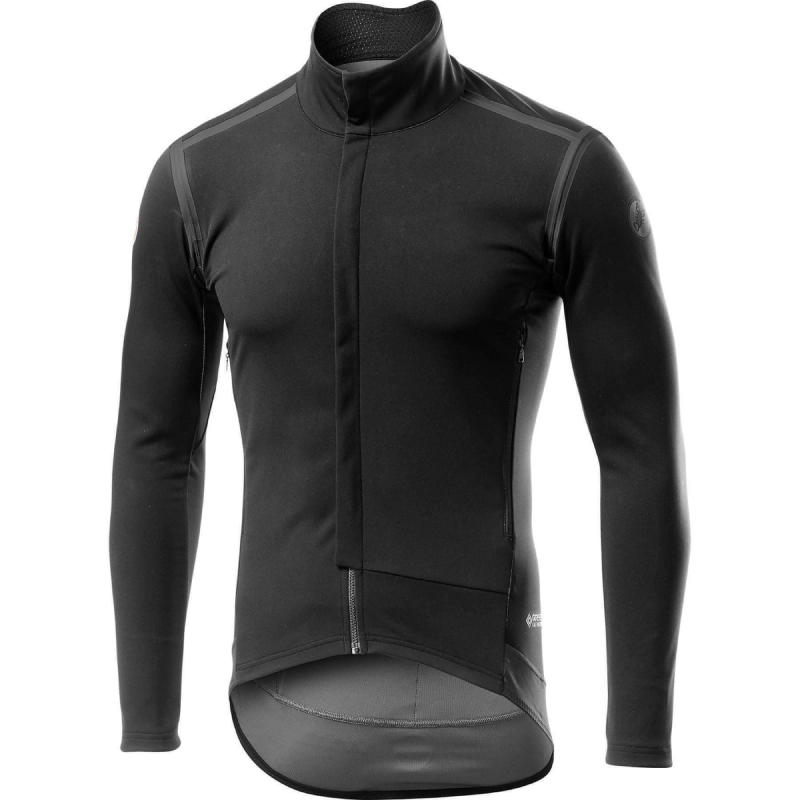
Though it has been on the market for some time, the Castelli Perfetto ROS Long Sleeve Jacket continues to justify its market-leading status. By merging the comfort of a long-sleeve jersey with the water resistance of a rain jacket, it offers incredible protection from the elements.
Read our full Castelli Perfetto RoS Jacket review
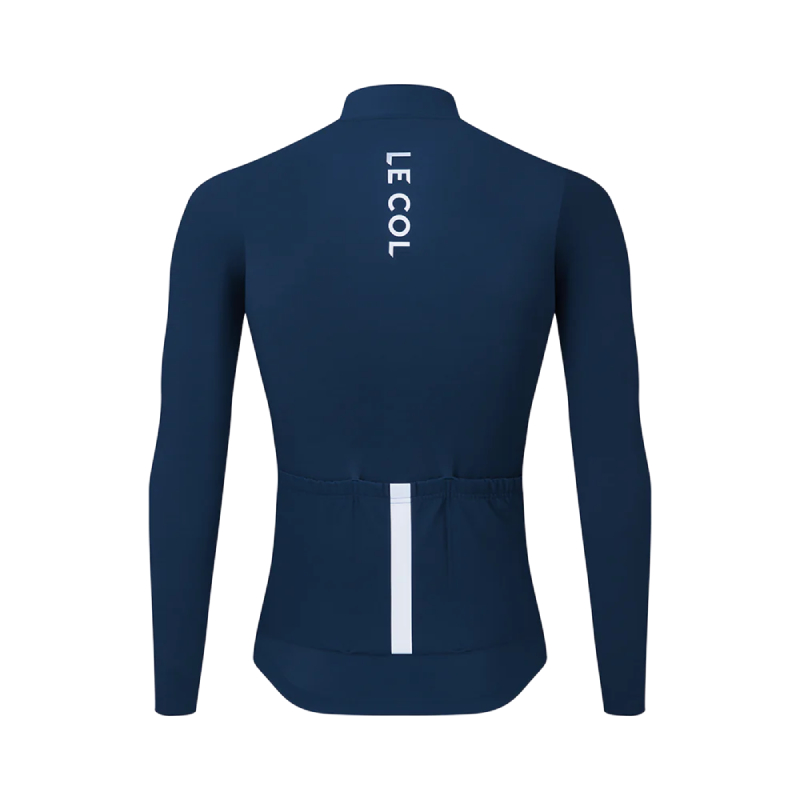
The Le Col Pro Aqua Zero Long Sleeve Jersey features a luxuriously comfortable fleeced lining that will keep you warm in temperatures ranging from six to twelve degrees. It's impressive rain protection put up a terrific fight against the wet stuff, and while it does eventually wet through, it stays nicely warm.
Read our full Le Col Aqua Zero LS review

Rapha's Classic Long Sleeve Jersey combines a refined, eco-conscious design with modern updates. Despite its lightweight feel, it performs well in temperatures as low as 5°C, making it great for layering.
Read our full Rapha Classic Long Sleeve jersey review
Best indoor cycling jerseys
Best for: Keeping you cool and helping to wick sweat when things get heated in Watopia.
Heat management is crucial when cycling indoors, which is why wearing a jersey might seem counterintuitive. However, specialised indoor cycling jerseys do more than just prevent unwanted exposure to neighbours. Similar to a summer base layer, a quality indoor jersey employs specific construction and fabric techniques to effectively wick away sweat and aid in cooling.
Why not check out our full guide to the best indoor cycling clothing?
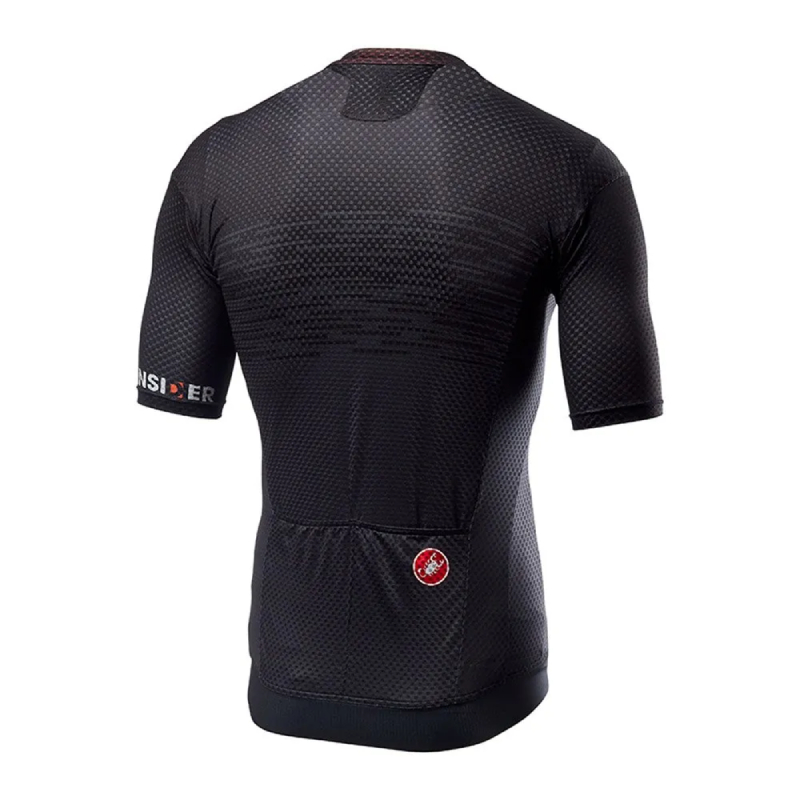
The Castelli Insider Jersey is designed primarily for indoor training but versatile enough for hot-weather. Made from semi-open mesh and snugly fitting, it offers modest coverage while remaining breathable and lightweight, ideal for turbo sessions and hot summer days.
Read our full Castelli Insider Jersey review
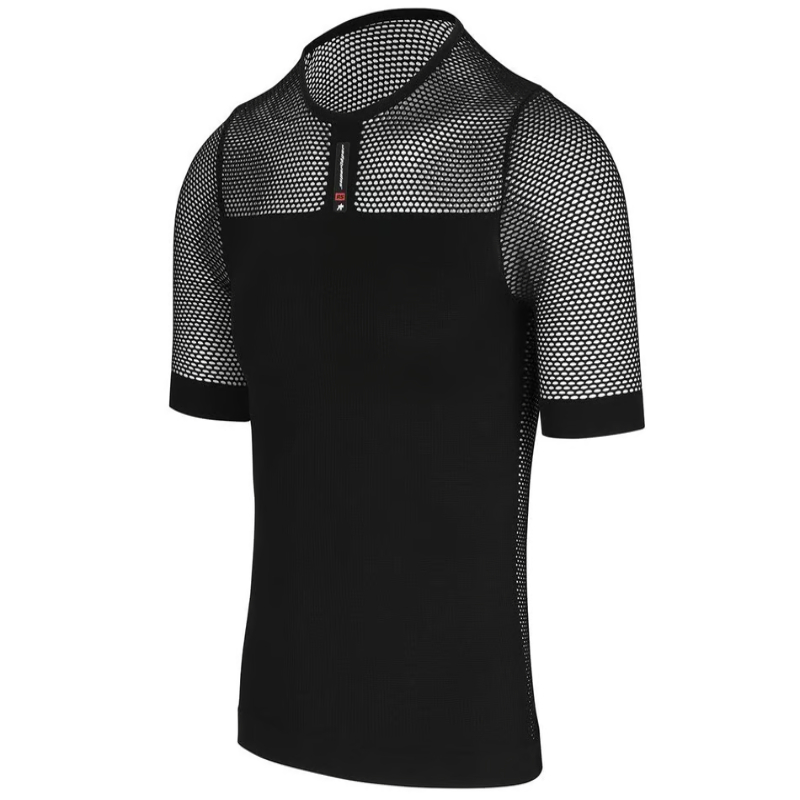
The Assos SS Superléger Skin Layer is an ultra-light base layer design that weighs just 65 grams. Despite its delicate, mesh-heavy construction, it offers impressive moisture-wicking and compression. It is suitable for hot and sweaty indoor training and warmer outdoor conditions.
Read our full Assos SS Superleger Skin Layer review
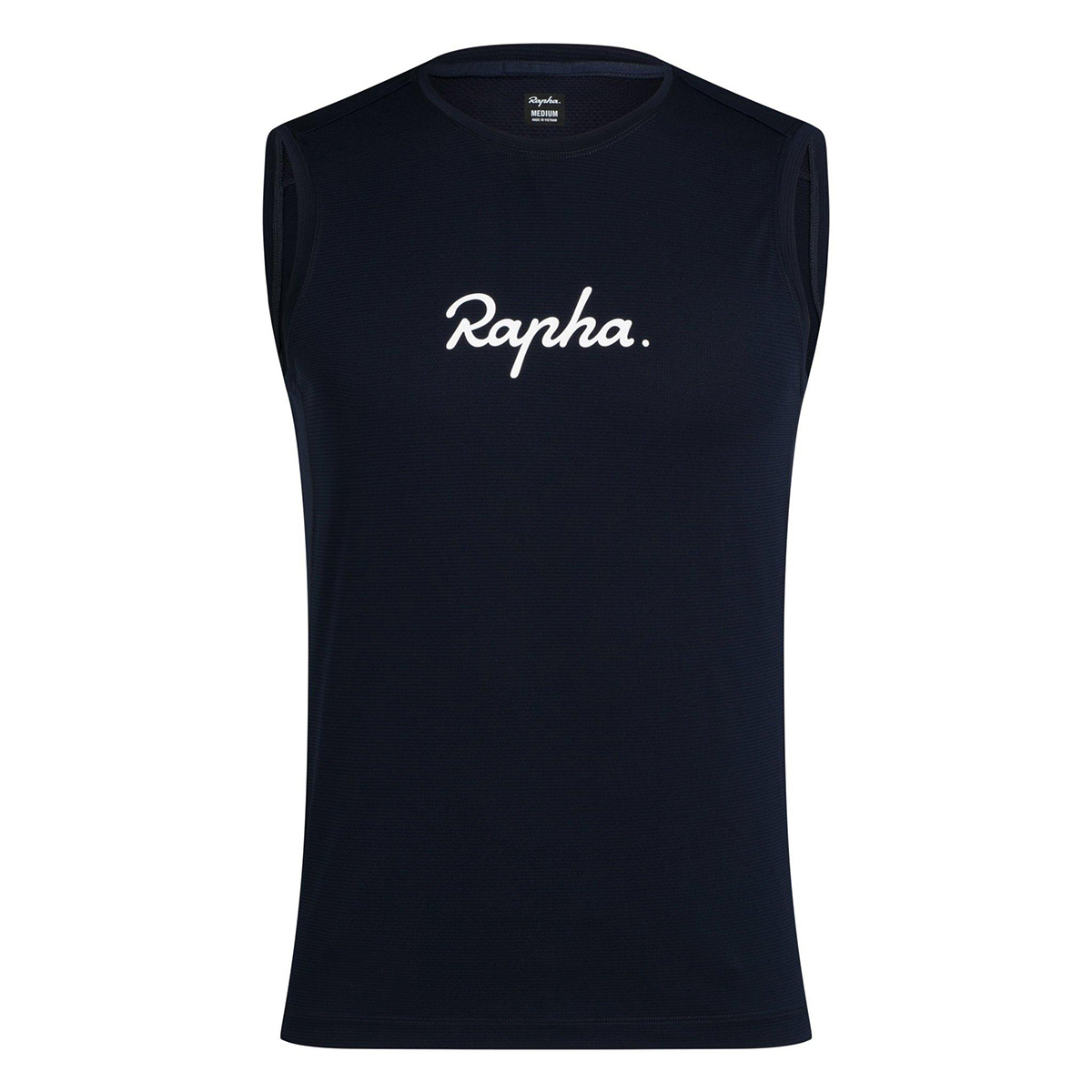
The indoor jersey from Rapha may not appear to be a very technical garment, but don't be fooled. It is, however, incredibly high-performing and nicely merges a more fitness-oriented style with function. It also happens to be one of the cheapest things in Rapha's catalogue.
Read our full Rapha Indoor Training T-Shirt review
Best short sleeve jerseys
Best for: Warmer and long days in the saddle when comfort and room to carry plenty of snacks are required
The humble short-sleeved cycling jersey has to perform many tasks for a relatively small amount of fabric. It needs to keep us cool, protect us from the sun, carry our spare tubes, phones, keys, and snacks, make us more visible, and even enhance our performance. That is a lot to ask for, yet you don't need deep pockets to get a good one. It's so tempting to be pulled in by a cool colour or design, but often, the best are those that keep things simple and focus on the fundamentals like fit and storage.
Why not check out our full guide to the best short-sleeve jersey guide?
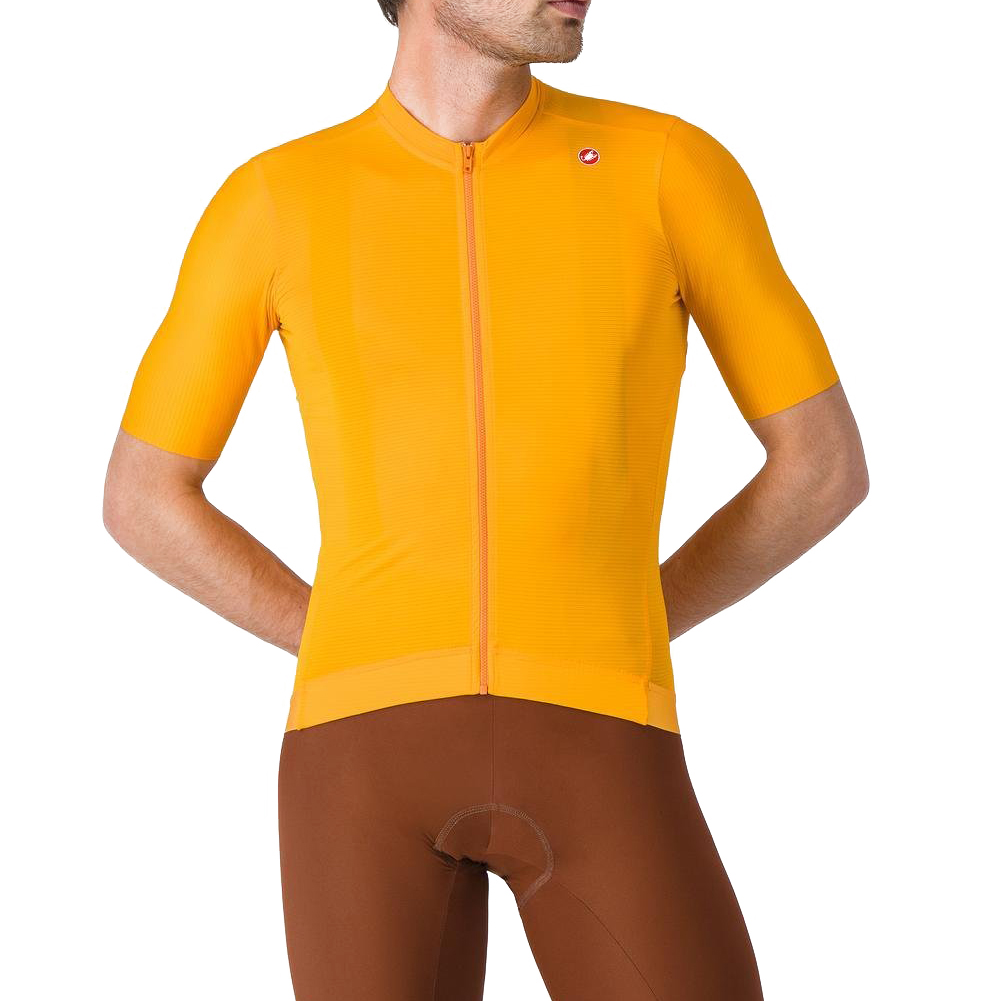
There is a lot to love about the Castelli Espresso jersey. Its light, stretch fabric provides a great fit and overall comfort. Combined this with its excellent attention to detail and minimalist looks it is really the perfect summer cycling jersey.
Read our full Castelli Espresso Jersey Review
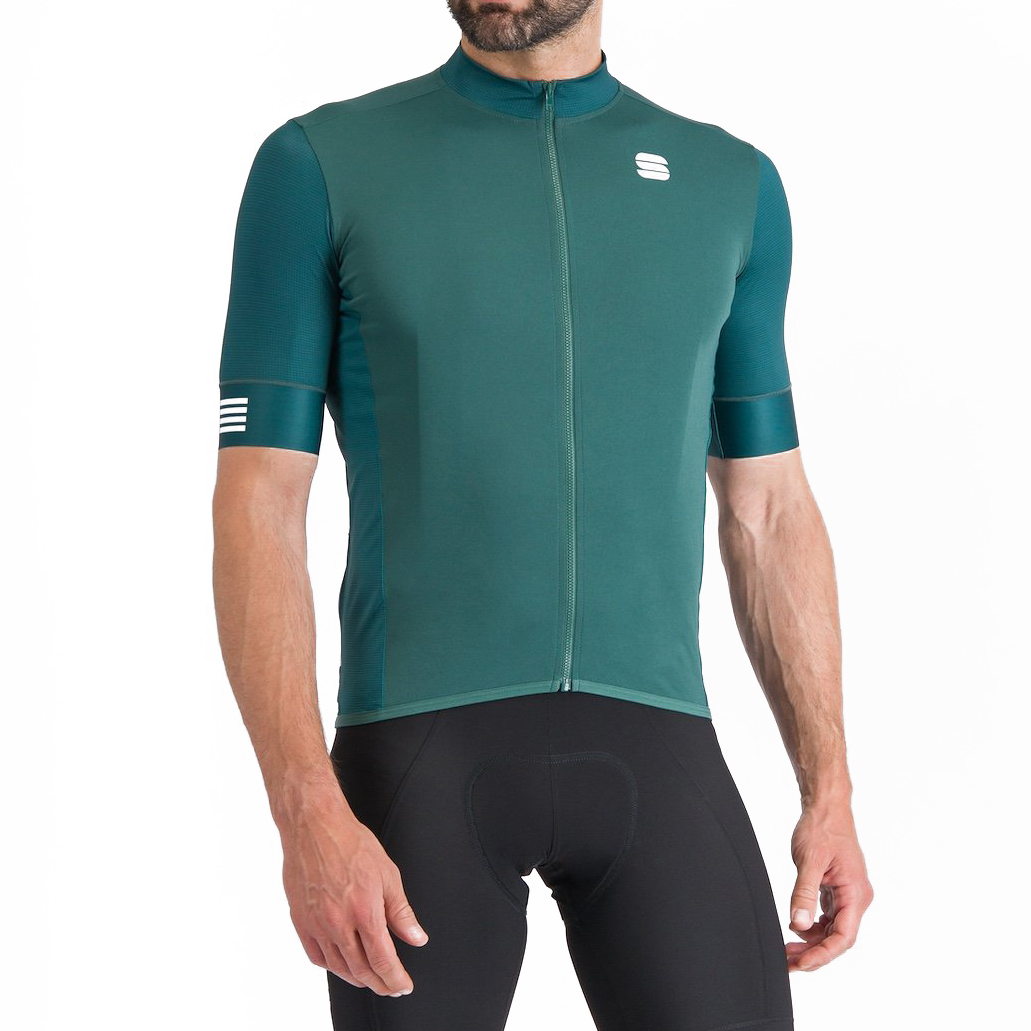
Given the price of the Italian brands' offerings, the Sportful SRK can be forgiven for any slight oddities. Its use of premium fabrics, and, aside from its length, offers a good, comfortable, albeit slightly relaxed fit.
Read our full Sportful SRK short sleeve Jersey Review
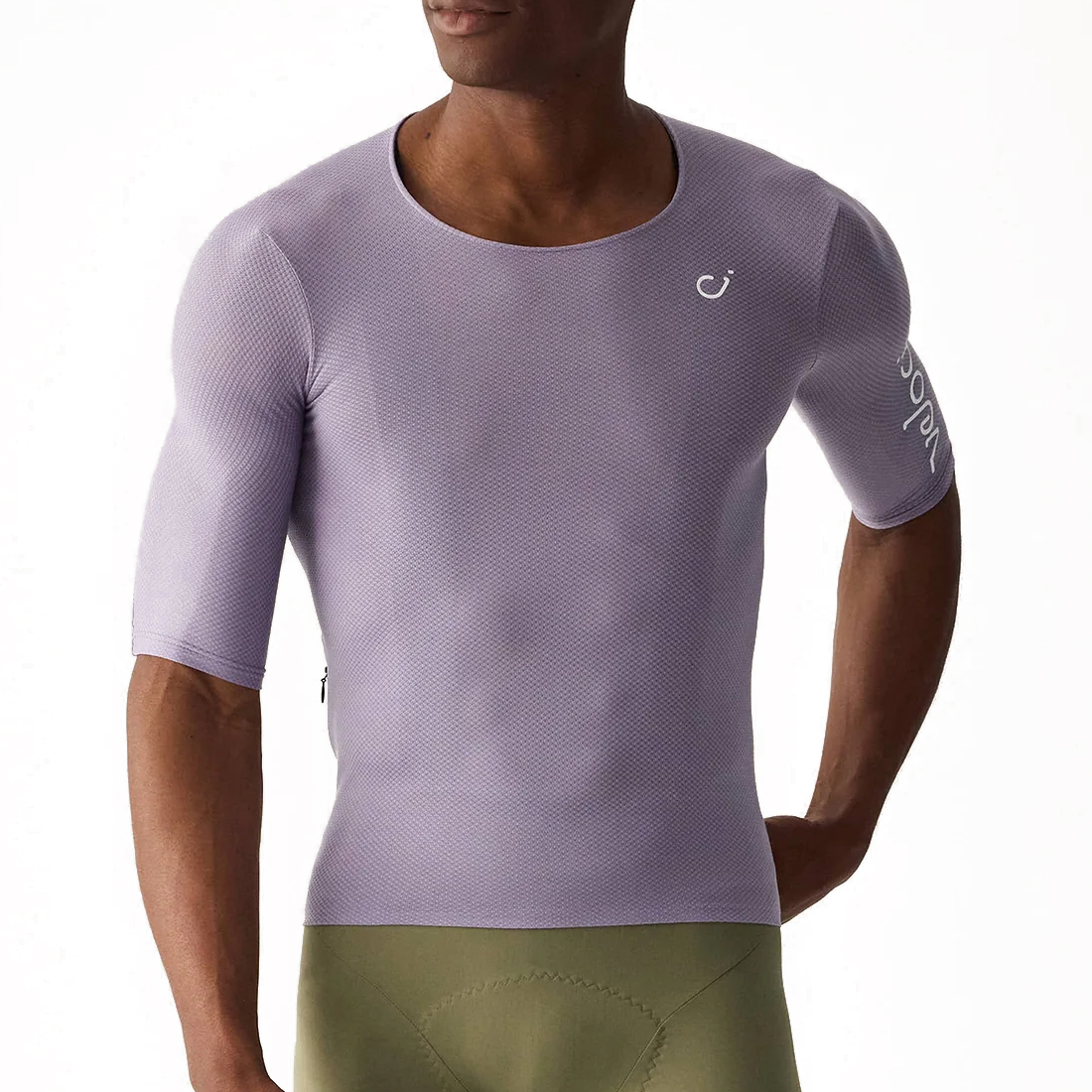
Velocio Men’s Concept Radiator Zippless offers a unique take on the traditional cycling jersey, and it's all the better for it. While the Concept line of garments is generally focused on racers, much of what's on offer here, in terms of cooling, fit, and aerodynamics, makes it a phenomenal jersey.
Read our full Velocio Men’s Concept Radiator Zippless Jersey Review
Best women's jerseys
In certain areas of women's cycling clothing, we would absolutely recommend purchasing specific options, such as the best women's cycling shorts. Cycling jerseys fall into the category of being optional, but not necessary; you can wear almost any jersey out there.
The best women's cycling jerseys tend to offer more feminine colour choices if that's what you're looking for. In some cases, the fit and sizing are adjusted to accommodate female anatomy, but this is rare. As far as we are concerned, there is no real performance benefit, and fit doesn't vary as much as you would think, with brands like Santini now offering Unisex jersey options.
However, there are some really great women's jersey options. Below are a few we have tested and highly rated.
Why not check out our complete guide to the best women's cycling jerseys?
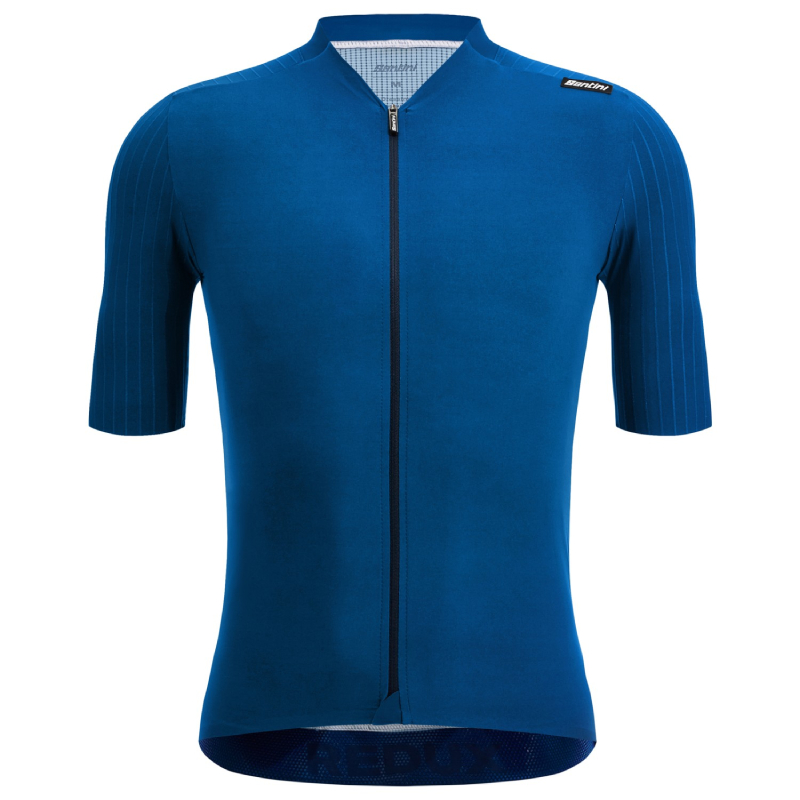
The Santini Redux Speed Jersey impressed with a second-skin feel and fit. Despite being relatively lightweight, it fared well during testing and proved durable even after several washes. The aero fit and finish make this a performance-focused jersey, which might not suit everyone.
Redux
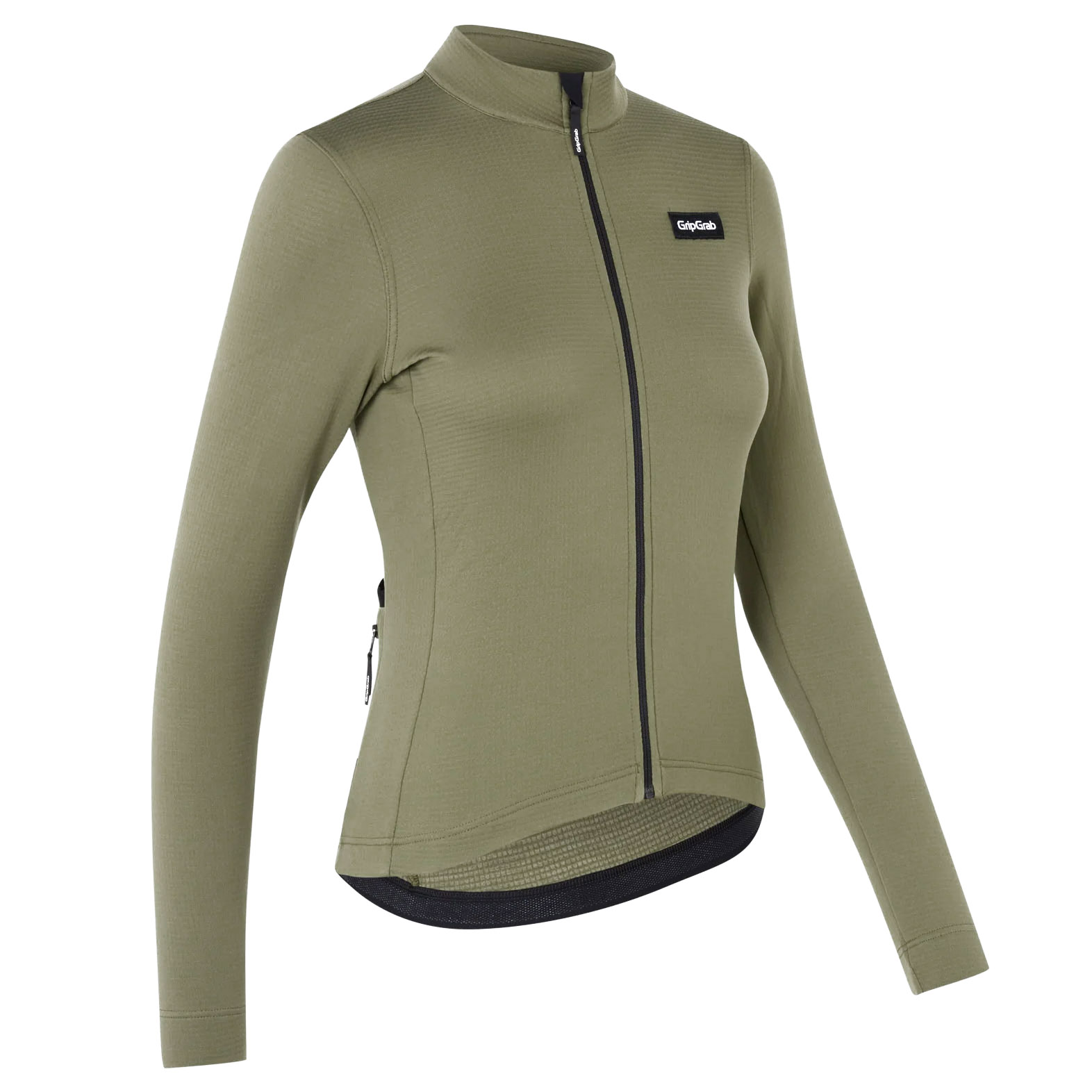
Previously known as the Gravelin during our testing, the EXPLR is identical. Incredibly soft, GripGrab does this by using a combination of recycled synthetic and merino wool fibres. While figure-hugging and snug, there is plenty of stretch and room to have it over other layers like a base layer or thermals.
Read our full review of the GripGrab Women’s Gravelin Long Sleeve Jersey
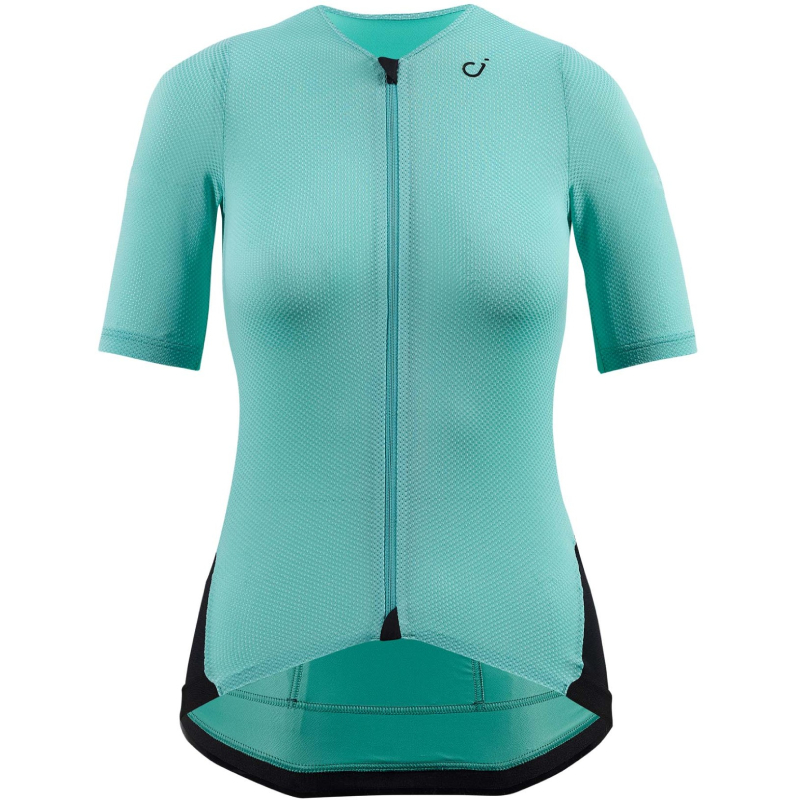
Lightweight and breathable, the Velocio Women's Concept Radiator jersey is ideal for hot climates and indoor cycling. While the fit is akin to that of zipping up a skinsuit, which isn't for everyone, the fabric wicks and dries so rapidly you barely notice dampness.
Read our full Velocio Women's CONCEPT Radiator Jersey Review
How we test the best cycling jerseys
We have a dedicated team of testers here at Cycling Weekly. Their job is to review a wide range of cycling products and write objective reviews based on their experience using them day in and day out in a wide range of conditions.
With extensive experience, they're well-positioned to compare products, identify their strengths and weaknesses, and provide an honest, unbiased assessment of their performance.
When it comes to testing jerseys, we consider a variety of factors depending on the products. For long-sleeved jerseys designed for cooler weather and long-distance riding, we assess their warmth-to-weight ratio, degree of breathability, and storage capacity. For summer jerseys, the latter two remain important considerations, alongside the jersey's material ability to provide protection against the sun. Of course, comfort reigns supreme, and we also examine the effectiveness of elements such as sleeve and hem grippers, zippers, and other details that can make a jersey less comfortable on the road.
For more on how we test, why visit our full how we test products and scoring guide.
How to choose the best cycling jersey
Choosing the best cycling jersey ultimately depends on understanding how your body responds to various conditions and how to layer your kit effectively. Since everyone is different, it's challenging to provide a definitive guide, but here are some general recommendations to consider; for a comprehensive guide, refer to our 'What to Wear Cycling' guide, which details the best combinations for each temperature:
Spring - Certainly, it can be wet and grey in the UK and North America. While we associate spring with warmer weather, it's always worth having one of the best packable rain jackets for cycling on hand. Temperature depends on your location, but you might be looking at long or short sleeves in combination with the best cycling base layers and best cycling arm warmers.
Summer - probably the only time of the year when you are going to be wearing just a short-sleeved jersey as a single layer. If the temperatures do start to rise, you may find one of the best cycling base layers, might be a good addition or even have one of the best cycling vests for long descents or cafe stops.
Autumn - Like spring, predicting what might happen in Autumn can be tricky. Considering September/October, at least here in the UK, it can still be warm and dry, so you are likely using a summer kit with additional layers. A thicker base layer, certainly arm warmers for cooler starts and possibly an insulated gilet. One thing is for sure, and that is that you will eventually need the best long-sleeved cycling jerseys.
Winter - It's almost a given you will be wearing one of the best winter cycling jackets by the time winter hits its stride. This will be in combination with long-sleeved jerseys, baselayers and potentially an insulated layer like a jacket or gilet/vest.
What fabrics should I look for?
A cycling jersey has to perform well in a range of conditions, so you can find jerseys designed for really hot rides as well as ones that bring you to the brink of winter, when you're likely to want to reach for one of the best winter cycling jackets instead.
That means that there are a wide range of fabrics used. Polyester is popular for its wicking qualities, meaning that you won't feel sweaty however hard you ride. It will also dry quickly if you do get caught out in a downpour.
Merino wool is another great option, often found in jerseys for cooler weather, although you can also buy merino blend jerseys for warmer rides. It has the advantage of great warmth that isn't affected by getting damp. It is less prone to getting whiffy than polyester too.
Frequently asked questions about cycling jerseys
What is the advantage of a fleeced material?
Whereas summer and indoor cycling jerseys will be lightweight and often be made of mesh to accelerate cooling, once the temperature gets below the mid-50s F / 12 C, you will probably need a bit more insulation on your ride.
That's where a more dense surface weave paired with a fleeced backing can really add warmth. Fleeced fabrics used in cycling are typically labelled Roubaix or Super-Roubaix.
How many pockets do I need?
The classic cycling jersey has three rear pockets. With a little organisation and if you're not trying to carry too much or can move some of your kit to one of the best bike saddlebags, that should be adequate for most day rides. Look out for pockets that are deep enough that items won't fall out if you do have to load up and that avoid pocket sag under heavy loads.
A zipped valuables pocket is useful, to keep keys and money safe as you are riding.
With the increased popularity of ultra-endurance and gravel riding, jerseys have sprung up that add lots more carrying capacity. Even if you're not contemplating a huge ride, just having somewhere separate to keep used food wrappers away from your other items is really useful and avoids mess.
Why does my cycling jersey need to be skin tight?
Most modern cycling jerseys tend to have a close fit. That's because windflap can ruin your aerodynamics, even if you're riding the best aero bike. A closer fit also helps keep the fabric in contact with your skin and assists moisture management, as this allows sweat to be wicked away efficiently, rather than staying on your skin.
If your riding is more relaxed, you might not worry about aerodynamics so much, so a looser fitting jersey might be more comfortable and gives a more classic look.
Most cycling jerseys are cut shorter at the front and longer at the rear too, to fit better in the riding position and ensure that you don't have a cold spot at your lower back as you ride.
What additional features should I look for?
In a summer jersey, mesh panels as the sides can add some extra airflow and cooling. A UPF rating of 30 or above will help stop sunburn. although you should apply sunscreen to your exposed skin and also under your jersey if it's a very lightweight mesh number.
In a cooler weather jersey some front side windproofing will make your jersey feel a lot warmer without extra bulk. Also look out for a high collar and close cuffs. Often, cool weather jerseys are DWR coated to help repel light rain and moisture, although they will usually wet out in a heavy downpour, when a rain jacket will be more useful.
Do I need a women's specific jersey?
The short answer to this is no! While there are some areas of women's cycling clothing we would recommend purchasing, like the best women's cycling shorts, it is certainly not necessary for jerseys. Some brands do offer slightly different cuts and fits, which could suit certain female physiques and anatomies better. The most obvious difference is the use of a more feminine colour palette, but some brands, like Santini, are now offering unisex jersey options. So, it is entirely up to you, the rider, to choose what suits you best.
The latest race content, interviews, features, reviews and expert buying guides, direct to your inbox!
Michelle Arthurs-Brennan the Editor of Cycling Weekly website. An NCTJ qualified traditional journalist by trade, Michelle began her career working for local newspapers. She's worked within the cycling industry since 2012, and joined the Cycling Weekly team in 2017, having previously been Editor at Total Women's Cycling. Prior to welcoming her first daughter in 2022, Michelle raced on the road, track, and in time trials, and still rides as much as she can - albeit a fair proportion indoors, for now.
Michelle is on maternity leave from April 2025 until spring 2026.
- Matt Ischt-BarnardEcomm and Tech Writer
- Sonny EvansWriter
